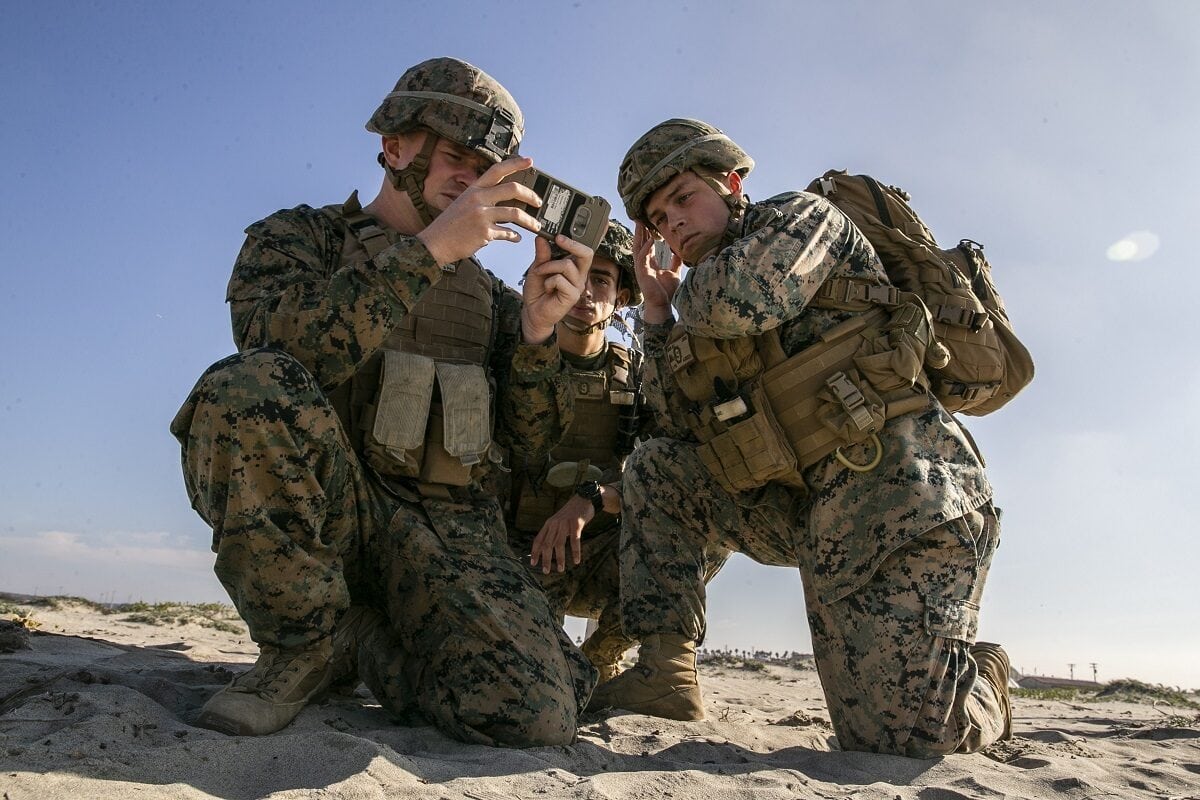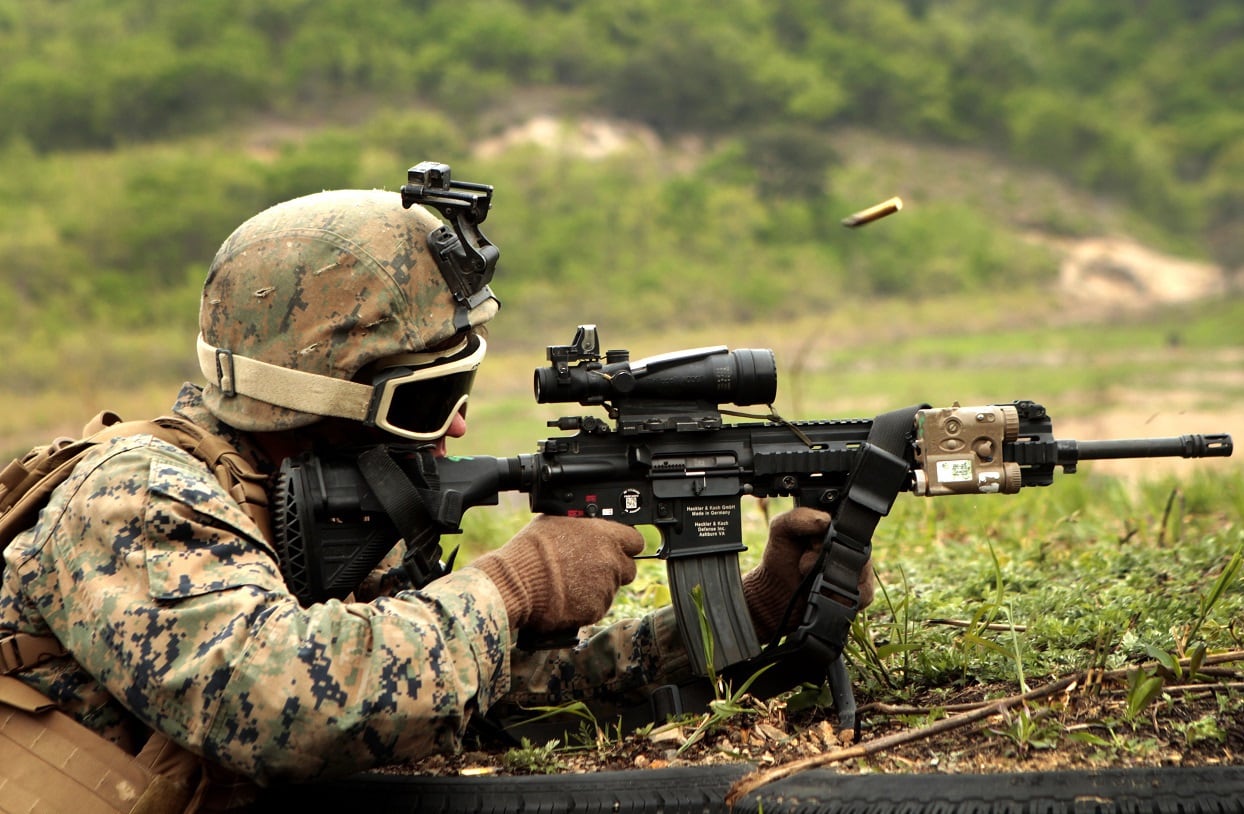With the U.S. military’s focus fixed on the Indo-Pacific and China, the US Marine Corps is returning back to its roots and preparing for a conflict.
The Marines are the Pentagon’s dedicated amphibious and expeditionary warfare force and would most likely be at the forefront of any war with China in the water- and island-rich Indo-Pacific theater of operations.
From Water to Target
In November, Marine combat engineers from the I and III Marine Expeditionary Force conducted a littoral mobility exercise to challenge their tactics, techniques, and procedures and test new technology that has become available.
The training event took place in Camp Pendleton, in California, and lasted for three weeks. Throughout the exercise, Marine combat engineers used new technology to see if it was useful and has promise for potential wider use by the force. Some of the new technology tested included the Vapor 55 unmanned aerial system, the Fusion Strategic Robotics System, and the REMUS unmanned underwater vehicle.
“This exercise was all about honing the Marine Corps’ interoperability with the Navy, specifically addressing where we can provide redundant and complementary capabilities. When we look at the emerging capability and relationship between the LERT and LEON, this interoperability field exercise provided the groundwork for what we can provide the Navy in terms of littoral mobility,” 1st Lieutenant Brandon Cavil, the officer in charge of the Littoral Engineer Reconnaissance Team, said in a press release.
The Marine combat engineers also worked on their mine countermeasure skills and reconnaissance capabilities. In an amphibious warfare setting, Marine combat engineers would be key in getting Marine infantry units from the shallow waters of the beaches to the target inland.
“This exercise has put our unit at the forefront of force design and helped us understand our role as a stand-in force by giving us the opportunity to develop tactics, techniques, and procedures that help us work more seamlessly with our Navy counterparts. These new capabilities enhance commanders’ real-time situational awareness in an amphibious environment, which changes the game when it comes to shortening the decision-making process,” Master Sergeant Matthew T. Jackson, who is assigned to the 1st Explosive Ordnance Disposal Company, added.
The training event finished with a bang. The Marine combat engineers conducted a full mission profile sending in the Littoral Engineer Reconnaissance Teams to find obstacles and then the Littoral Explosive Ordnance Neutralization platoon to clear them and any mines for a larger Marine infantry force. Littoral Engineer Reconnaissance Teams even used civilian vehicles for their reconnaissance, while the Littoral Explosive Ordnance Neutralization platoon was inserted via small boats.
“This operation validated assumptions and concepts regarding the employment of multiple capabilities like the Vapor-55, LEON, and other reconnaissance technology in the tactical collection of geospatial intelligence, enhancing the supported units’ mobility through standoff detection of natural and manmade obstacles, and the ability to integrate the information into the command and control network in a way that is actionable at multiple levels of the chain of command,” Lieutenant Colonel Marcus Gillett, the commanding officer of 9th Engineer Support Battalion.

From left, U.S. Marine Corps Sgt. Christopher N. Lupyak, Lance Cpl. Joseph Burns, and Lance Cpl. Nolan Jaros, all combat engineers with the Littoral Engineer Reconnaissance Team, 9th Engineer Support Battalion, 3d Marine Logistics Group, utilize the Android Tactical Assault System to aid in a reconnaissance patrol during a littoral mobility and detection exercise on Camp Pendleton, California, Nov. 18, 2021. The ATAK is a tool that allows Marines to rapidly report critical geospatial information to support intelligence requirements for a given objective. During this exercise, 7th and 9th ESB are refining their skills with emerging Marine Corps technologies in order to facilitate follow-on forces’ littoral mobility from shallow water to the objective. (U.S. Marine Corps photo by Sgt. Hailey D. Clay)
Elements from the 9th Engineer Support Battalion, 3rd Marine Logistics Group, and 7th Engineer Support Battalion, 1st Marine Logistics Group led the exercise and also worked with the Navy’s Explosive Ordnance Disposal (EOD) technicians from the Explosive Ordnance Disposal Mobile Unit 1.
The Marine Corps
The Marine Corps and its amphibious and expeditionary warfare capabilities make them the ideal force for a conflict in the Indo-Pacific area of operations. Their history, after all, is closely linked to the region.
During the Second World War, the Marine Corps led the way in the fight against imperial Japan in the Pacific theater, fighting notable battles, such as Guadalcanal, Saipan, Iwo Jima, and Okinawa. By the end of the war, the Marines had amphibious warfare down to a science, a far cry from the initial amphibious landings that had cost so much blood.
Stavros Atlamazoglou is a defense journalist and military expert specializing in special operations, a Hellenic Army veteran (national service with the 575th Marine Battalion and Army HQ), and a Johns Hopkins University graduate.

